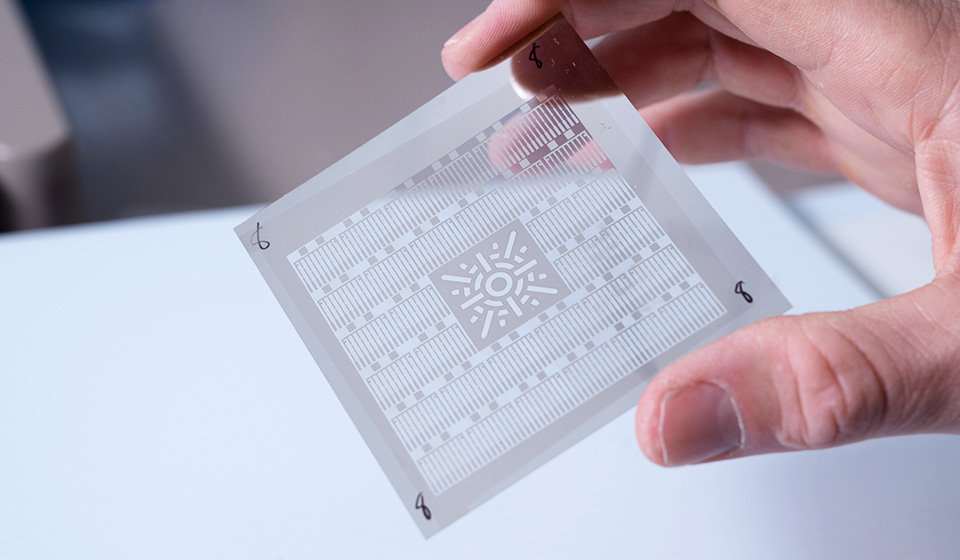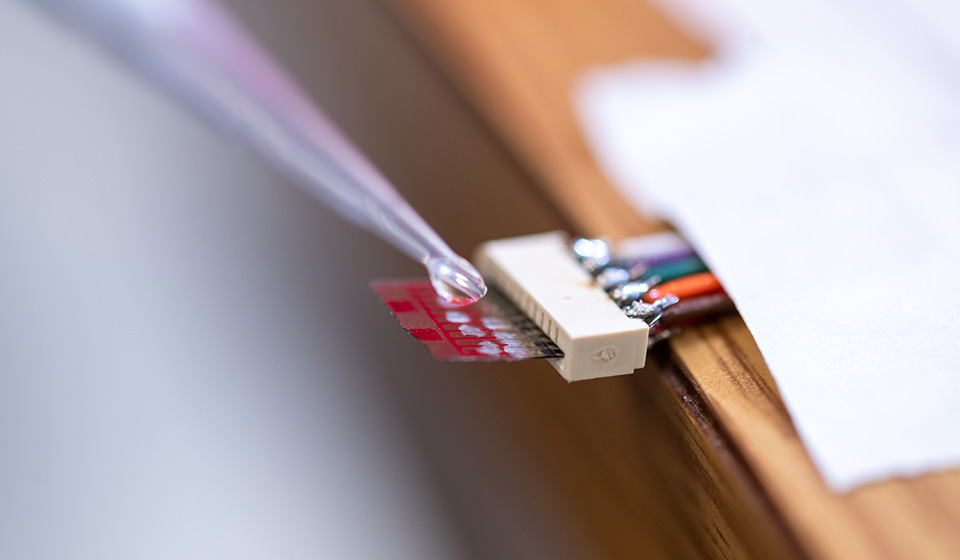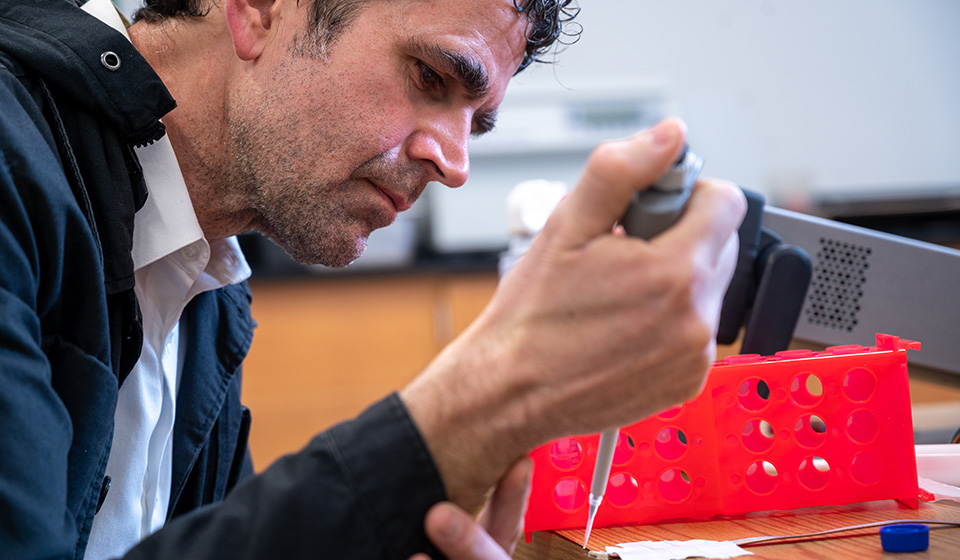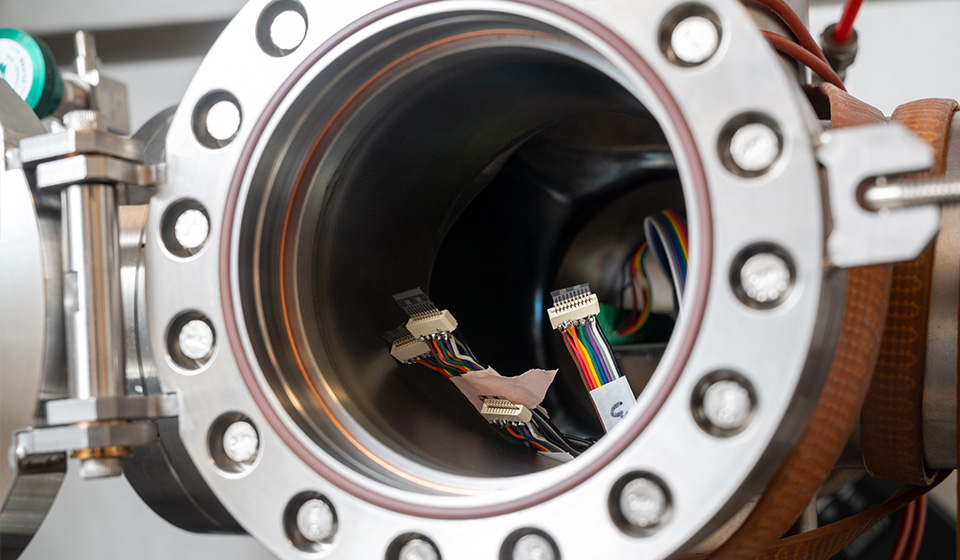Momentum

Detecting Danger
Can a wearable device the size of a memory stick protect people from harm due to airborne toxins and other inhalation hazards? Christopher Muratore, associate professor of chemical and materials engineering and Ohio Research Scholars Endowed Chair Professor, leads a research team developing low-cost wearable sensors that can.
“We originally started working on the technology to detect harmful vapors for workers in confined spaces, which is a common scenario in the aerospace industry, but the technology is applicable to any individual with concerns about air quality, a topic recently in the spotlight after the East Palestine incident,” said Muratore.
Throughout the project, University of Dayton students worked in Muratore’s lab and also at the Air Force Research Lab as part of the educational partnership between UD and AFRL. The team began work in 2014 by developing a process for scaled production of electronic devices with ultra-thin semiconducting material demonstrating measurable changes in electrical conductivity when just a few hazardous molecules attached to its surface.
Students developed early versions of the devices, which are about the size of a memory stick and clip onto the wearer’s clothing. Initially, they could make about 10 devices per week in the lab. With support from the nearby AFRL Materials Directorate, the team developed a mass production process allowing routine production of a million devices per day. The mass produced sensors are fabricated via a roll-to-roll process on a flexible glass substrate and a thin coating (five molecular layers or less) of semiconducting material as the sensor transducer. A high-speed scanning laser is used to pattern the circuits during the process.
At the onset of the pandemic, Muratore’s team realized it would be straightforward to modify the devices to detect disease, like a virus. As a result, the group has partnered with AFRL and a medical diagnostics company to develop the platform for this use as well.
Muratore feels even more can be done with these sensors in the future. “We have developed an ultra-sensitive detection platform that can be used for diverse applications in addition to monitoring industrial environments and medical diagnostics. We hope to also address challenges in early detection of agriculture crop damage and quality control in food production and distribution,” he said.
For now, the team is preparing devices for demonstrations in actual industrial environments for detection of harmful vapors through sponsorship from the Ohio Bureau of Workers’ Compensation. The devices will go head to head against devices with 1,000 times higher production costs, and are 10 to 100 times larger, reducing accessibility and making their use inconvenient and intrusive for workers. Muratore is also confident his group’s devices will outperform commercially available products in terms of sensitivity and detection limits.
“It’s been very exciting, really the highlight of my career,” said Muratore, “to develop new materials and process into products addressing important global challenges of air quality and reducing the impact of future pandemics with new technology.”



